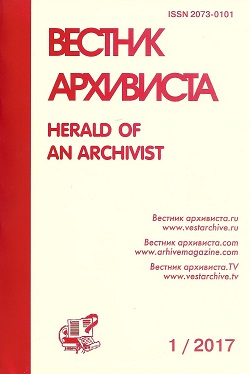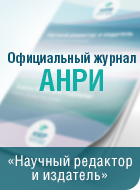Stalin’s Liquidation of Kulaks as Class and Organization of the Process of the Soviet Peasantry Proletarianization



| 15 December 2022
Posted in
Archival funds and collections
Scientific article
УДК 94(470)+930.253
DOI 10.28995/2073-0101-2021-4-1229-1244
Anfertiev, Ivan A.
Russian State University for the Humanities, Moscow, Russian Federation
Stalin’s Liquidation of Kulaks as Class and Organization of the Process of the Soviet Peasantry Proletarianization
Abstract
The article examines various aspects of the recently revealed archival document of the Central Committee of the All-Union Communist Party (Bolsheviks) on the plan of repressive policy against the Soviet peasantry “On measures to eliminate kulak farms in the areas of continuous collectivization.” The author notes that the process of liquidation of kulaks as class, or of depeasantrification, as it is often designated in the historical literature, has been well studied. The first and rather timid attempts to assess the problem in the terms of individual “deformations of socialism” date to the turn the 1990s. At present, the attention is mostly focused on the regional aspect, as over the past three decades there has been made available a complex of sources from local archives, which was previously in closed storage. The article analyzes preconditions of the protest sentiments in the course of mass collectivization undertaken by the party bodies in the center and in the regions, as well as harsh suppression of possible peasant uprisings by punitive bodies, identification and persecution of the instigators. Examination of official party documents on collectivization permits to identify the ideological, social, and economic criteria for ranking Soviet peasants among kulaks. It is concluded that liquidation of kulaks as class on the territory of the USSR was conducted in a very short time and in two stages. At the first stage, in January – March 1930, repressions were to be carried out in the economically developed regions: the Black Earth region, the Middle and Lower Volga region, Kazakhstan, Ukraine, Belarus, North Caucasus, Dagestan, Ural, Siberia. The second stage spread them to other regions of Soviet Russia. The author notes an inconsistency in the thesis of positive economic consequences of the mass collectivization and elimination of kulaks as class for industrialization. Taking into account their consequences, the author proposes to consider these two complementary processes initiated by the leadership of the CPSU (B) as a preventive campaign to intimidate the rural population in order to return to the methods of surplus appropriation via formation of the collective farm system. It has been revealed that J.V. Stalin’s plans, in accordance with the Marxist-Leninist doctrine, included a rapid change in socio-economic status of peasants: from relatively free farmers, producers of agricultural products entitled to manage their crops (after paying the taxes) to hired workers, in other words, proletarians. According to the author, the large-scale famine of the first half of the 1930s was a direct consequence of the so-called “revolutionary transformations in agriculture,” the victims of which are still to be accurately calculated.

Keywords
Archival document, source, liquidation of the kulaks as a class, food appropriation of a new format, areas of complete collectivization of the USSR, famine in the USSR in 1931-1935, forced collectivization, I. V. Stalin.
Download the article: pdf
References
BELOVA, A. V. Fantom “Ekonomicheskoi teorii” v usloviyakh totalitarizma: po povodu stat'i I. A. Evdokimova “Khozyaistvennye otnosheniya v teoreticheskikh trudakh Iosifa Stalina” [Phantom of the "Economic theory" under the conditions of totalitarianism: Concerning I. A. Evdokimov’s article “Economic relations in the theoretical works of Joseph Stalin.” In Russ.]. IN: Vestnik Tverskogo gosudarstvennogo universiteta. Seriya: Ekonomika i upravlenie [Bulletin of the Tver State University. Series: Economy and administration], 2019, no. 4 (48), pp. 214-220.
VOLKOVA, E. P. Fenomen “kulaka” v sovetskoi pechati perioda kollektivizatsii (1928-1932): priznaki, osobennosti kul'tivirovaniya i kachestvennye izmeneniya vrazhdebnogo obraza [Phenomenon of the “kulak” in the Soviet press of the Collectivization period (1928–32): Signs, features of cultivation, and qualitative changes in the enemy image. In Russ.]. IN: Vestnik Moskovskogo universiteta. Seriya 10: Zhurnalistika [Bulletin of the Moscow University. Series: Journalism], 2013, no. 3, pp. 72-87.
SUSLOV, A. B. Iz"yatie krest'yanskoi sobstvennosti v protsesse sotsialisticheskogo preobrazovaniya derevni v nachale 1930-kh gg. (Na primere Permskogo kraya) [Seizure of peasant property in the process of socialist transformation of the countryside in the early 1930s: The case study of the Perm Krai. In Russ.]. IN: Istoricheskie, filosofskie, politicheskie i yuridicheskie nauki, kul'turologiya i iskusstvovedenie. Voprosy teorii i praktiki [Historical, philosophical, political, and legal sciences, culturology and study of art]. Tambov, Gramota publ., 2013, no. 1 (27). In 2 parts. Part 2, pp. 172-177.
About the authors
Anfertiev Ivan Anatolievich, PhD in History, associate professor, Russian State University for the Humanities, History and Archives Institute, department of contemporary history of Russia, professor, Moscow, Russian Federation, +7-916-252-28-22, This e-mail address is being protected from spambots. You need JavaScript enabled to view it
Submitted 22.02.2021, published (for citation):
ANFERTIEV, I. A. Stalinskaya likvidatsiya kulachestva kak klassa i organizatsiya protsessa proletarizatsii sovetskogo krest'yanstva [Stalin’s Liquidation of Kulaks as Class and Organization of the Process of the Soviet Peasantry Proletarianization. In Russ.]. IN: Vestnik arhivista / Herald of an Archivist, 2021, no. 4, pp. 1229-1244. doi 10.28995/2073-0101-2021-4-1229-1244











